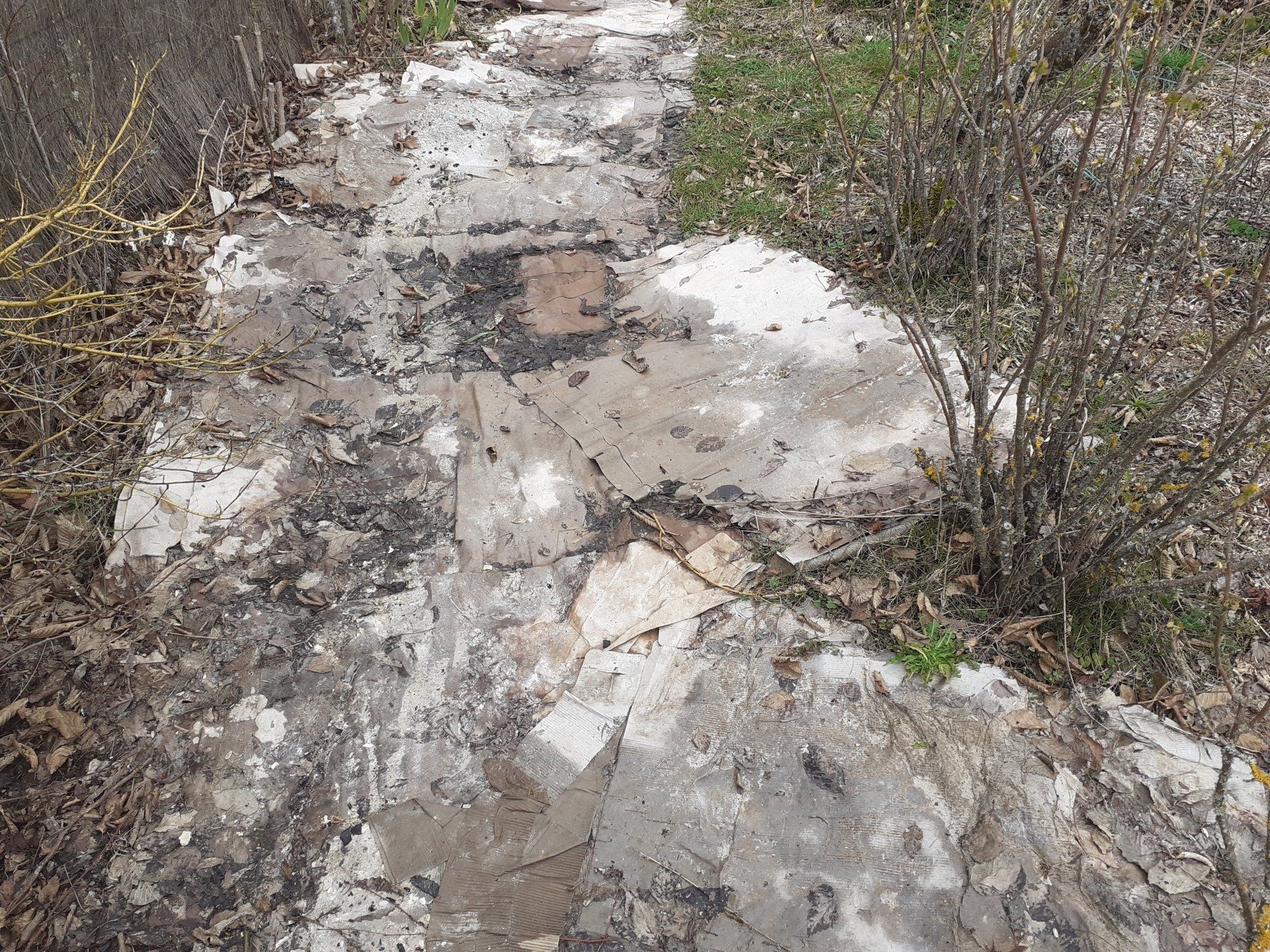OUR
FOREST
GARDEN
Perennial Leak starting to appear through the mulch.
Our forest garden is a NO DIG ZONE.
By avoiding digging we do not disturb the soil which is full of helpful micro-organisms, fungi, and worms that help spread nutrients to plant roots.
Covering the soil in mulch prevents moisture loss, provides a rich soil to grow in, and it's an excellent way to clear a growing area.
Our forest garden is only about 1000 sq. meters but we needed a large amount of organic matter. We use local tree bark, leaves, compost and grass cuttings.
How we create a new NO DIG area.
Our aim is simple - to exclude the light so weeds can't grow. And to cover the soil with a rich organic mulch.
After cutting the grass or weed, which is left on the ground, we lay cardboard with any plastic tape removed. We layer the cardboard until the ground is completely covered.
We then add a layer of organic mulch, mostly grass cuttings, leaves, and local tree bark, which we break by hand. For finer pieces we use our mulching machine. Mulched wood takes longer to break down than the bark.( TIP - we learnt that using sawdust absorbs nitrogen from the soil which plants need to grow. It is possible to mix sawdust and manure to make compost in about 8 months. )
After about 6 - 12 months the weeds and grass underneath die and break down. We continue to add mulch and use this to keep the soil covered until ground-cover plants can take over the job. We plant into the mulch, adding compost if needed rather than digging a hole -except for trees and shrubs.


Why we created a new NO DIG area.
Less work , no blisters, no aching back, no soil damage.
"Digging tears up mycorrhiza - invisible fungus-like networks that live symbiotically with plants, benefiting the roots. Mycorrhiza grow slowly at only 15-20 cms (6-8 ins) a year. Digging destroys the networks, preventing them from establishing themselves widely, thus reducing some plants’ ability to access nutrients and resist pests and drought.
Stop mass murder of of worms.
No Dig focuses on protecting the life in the soil and research backs this up. Not only do worms not get bisected by your spade, but agricultural research has shown that the more often and deeper that soil is disturbed, the fewer and smaller are the worms found in it. With regular compost mulches your worm population will increase.
And we want as many worms as possible. Worms aerate the ground with their burrows (which also form channels for roots and rainfall), and produce casts that are considerably richer in nutrients than the surrounding soil, partly down to the nitrogen-fixing bacteria found in their guts, which help them transfer a significant amount of nitrogen to the soil from the plant litter that they ingest. They’re surprisingly fast too. By the time I come to sow in spring, worms have incorporated much of the fall compost I spread on top into the ground below. "Credit Helen Gazely
Wildlife
In the short period we have been creating our no dig forest garden, we have noticed an increase in insects and wildlife. It is fascinating watching bees make nest in the grass while we eat lunch and Jenni enjoys being distracted from her writing by birds that now enjoy finding food under the pieces of bark.
Charles Dowding is the pioneer and expert of no dig gardening. He has an excellent you tube channel which explains all.
"My speciality is the no dig method, suitable for all soils. It results in fewer weeds, and vegetables plus flowers grow as well if not better than when soil is tilled or dug. And it's good for climate change because no soil carbon is lost in tillage."
